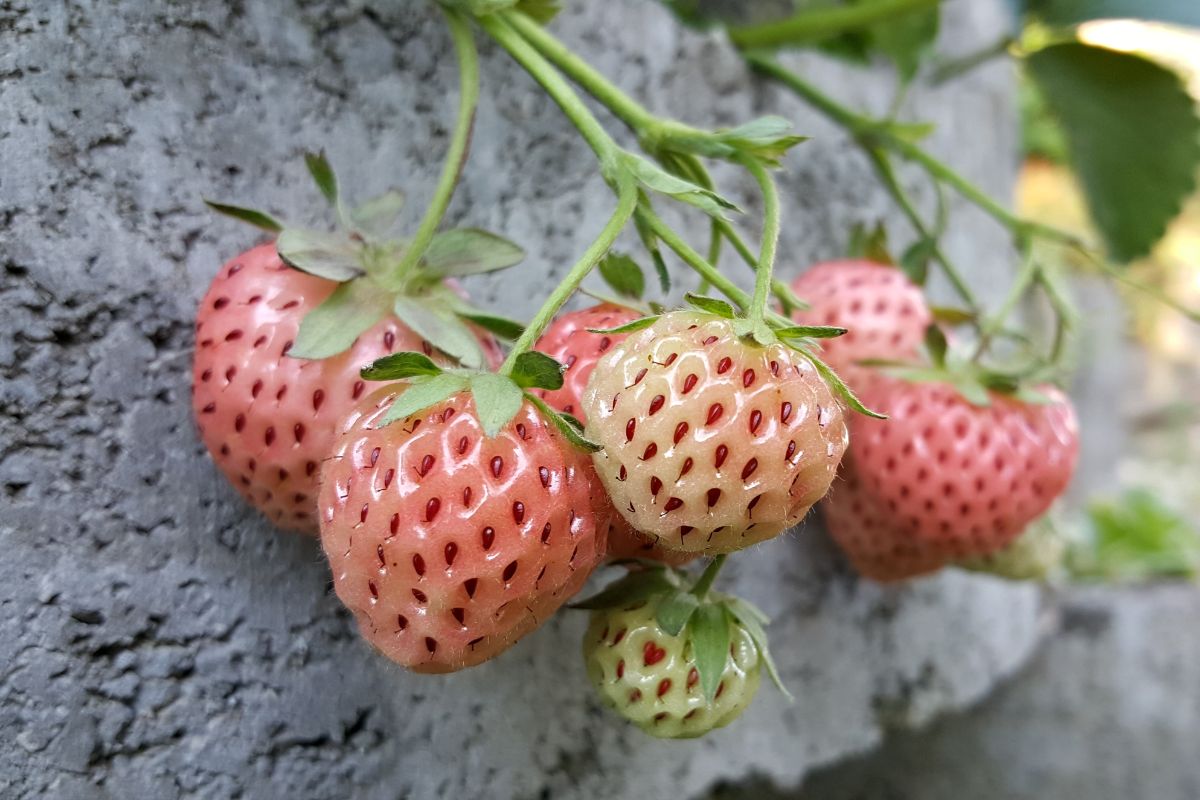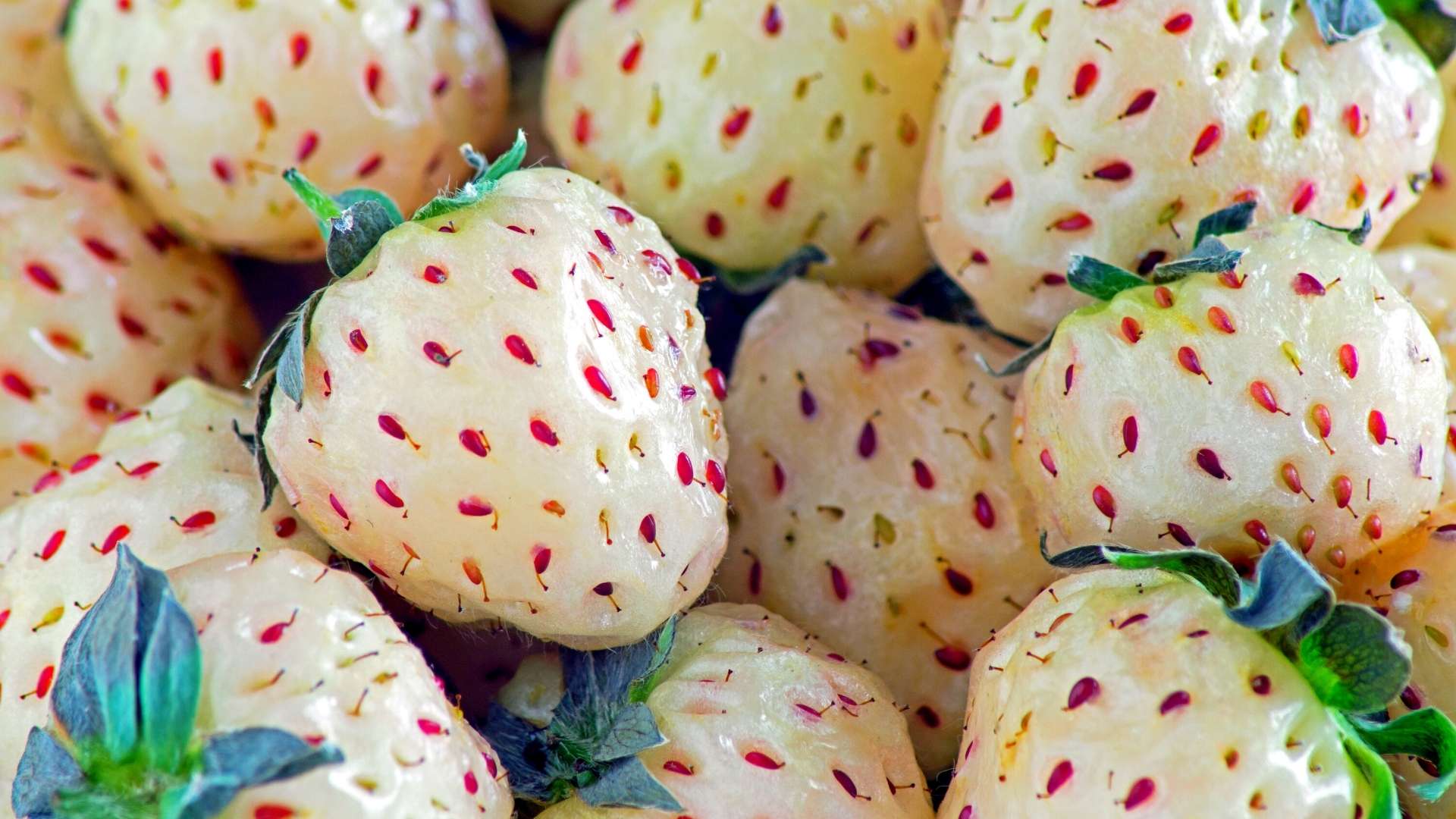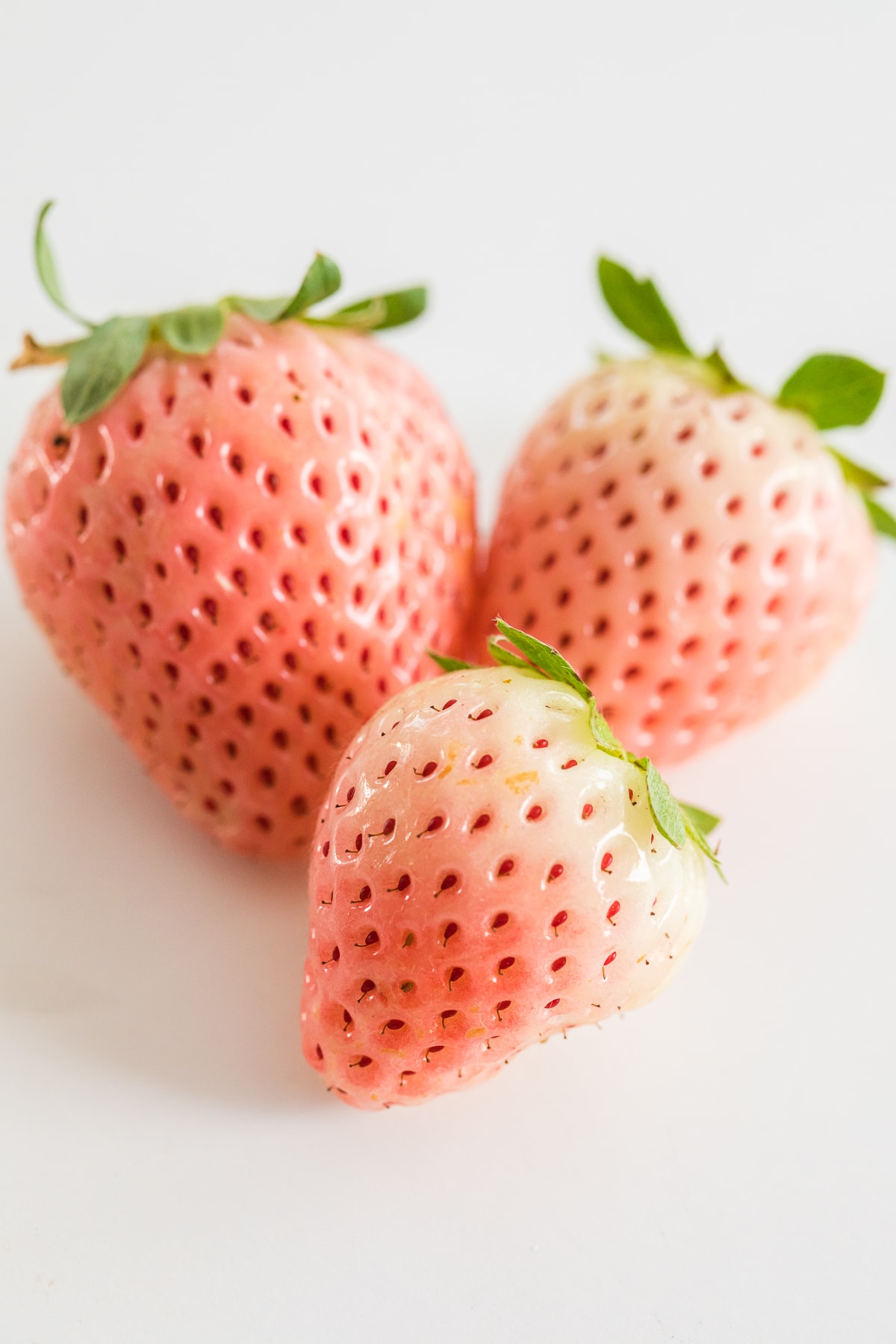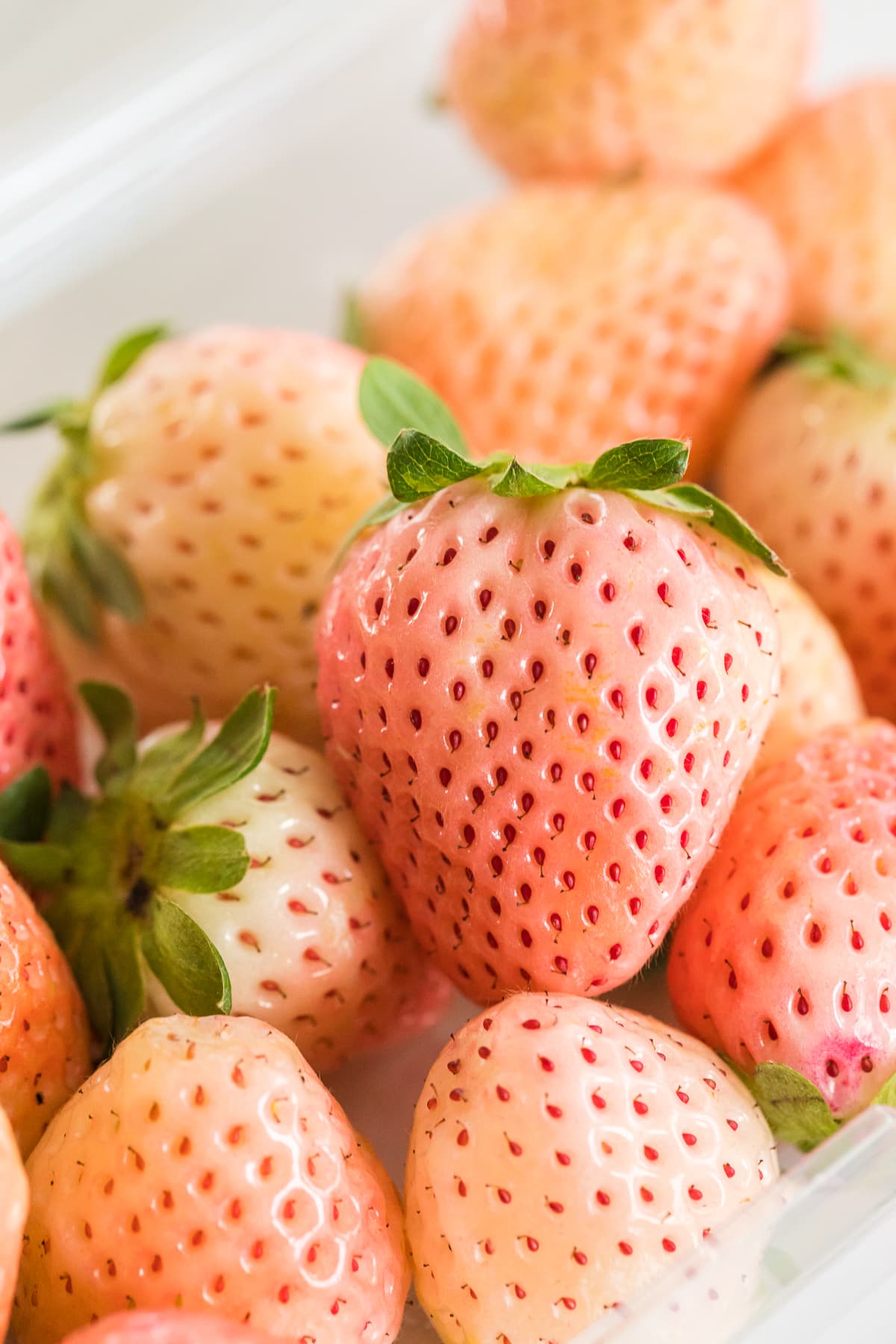Pineberries are ripe when their color changes to a pale pink or white and they emit a sweet aroma. The fruit should feel slightly soft to the touch without being mushy.
Pineberries, a unique variety of strawberry, offer a delightful flavor reminiscent of pineapple. These fruits are popular among gardeners and food enthusiasts alike. Knowing how to identify ripe pineberries is essential for enjoying their sweet, tropical taste. Ripe pineberries not only provide a delicious snack but also add a vibrant touch to salads and desserts.

Credit: strawberryplants.org
Understanding their ripeness ensures you harvest them at their peak flavor. Keep an eye on their color and texture as you check your garden or local market for these exotic berries. Enjoy the process of discovering this delightful fruit!
How to Tell If Pineberries are Ripe : Step by Step Guide
Introduction To Pineberries
Pineberries are a special type of white strawberry. Their unique color makes them stand out. This fruit is a mix between a strawberry and a wild berry. They have a sweet and slightly tart flavor that many love.
The allure of pineberries comes from their unusual appearance. Their white flesh is dotted with red seeds. This gives them a beautiful look that attracts many fruit lovers.
| Feature | Pineberry | Traditional Strawberry |
|---|---|---|
| Color | White with red seeds | Bright red |
| Flavor | Sweet and tart | Sweet |
| Texture | Soft and juicy | Firm and juicy |
Identifying Pineberries
To identify ripe pineberries, check their color first. Ripe pineberries are usually a pale pink or light white. Look for a few red seeds scattered on their surface. The skin should be smooth and free from blemishes.
Another sign of ripeness is the texture. Ripe pineberries feel slightly soft when gently squeezed. They should not be too hard or mushy.
| Pineberry Variety | Characteristics |
|---|---|
| White Pineberry | Light pink skin, sweet flavor |
| Red Pineberry | More red seeds, tart taste |
| Gold Pineberry | Golden hue, unique sweetness |
Optimal Conditions For Pineberry Ripeness
The optimal conditions for pineberry ripeness depend on several factors. The growing season for pineberries lasts from spring to fall. They thrive in areas with mild climates. Extreme temperatures can harm the plants.
Soil quality is crucial for pineberries. They prefer well-drained soil rich in organic matter. A pH level between 5.5 and 6.5 is ideal. Sunlight is also important; pineberries need at least 6 to 8 hours of direct sunlight daily.
| Factor | Optimal Condition |
|---|---|
| Growing Season | Spring to Fall |
| Climate | Mild Temperatures |
| Soil Type | Well-drained, Organic |
| pH Level | 5.5 – 6.5 |
| Sunlight | 6 – 8 Hours Daily |
Sensory Indicators Of Ripeness
Color is a key factor in determining ripeness. Ripe pineberries have a soft, creamy white hue. Look for a hint of pink on their skin.
Texture is also important. Gently squeeze the berry. If it feels firm but slightly soft, it is likely ripe.
Aroma plays a big role too. Ripe pineberries give off a sweet, fruity fragrance. A strong scent indicates they are ready to eat.
Taste Profile Of A Ripe Pineberry
The taste profile of a ripe pineberry is unique and delightful. These berries have a sweetness level that can surprise many. They are often sweeter than traditional strawberries. A ripe pineberry might taste like a mix of strawberry and pineapple. This flavor combination creates a tropical vibe.
Flavor comparisons show that ripe pineberries are less tart than red strawberries. Their sweetness is more pronounced, making them a favorite for desserts. Many describe the flavor as juicy and refreshing. This makes them perfect for snacking or adding to salads. Enjoying a ripe pineberry can be a delicious experience!
Harvesting Techniques
To check if pineberries are ripe, look for a light pink color. A ripe pineberry feels slightly soft when gently squeezed. The fragrance should be sweet and fruity. Pick them in the morning when they are cool. This helps preserve their flavor and texture.
Some common mistakes include harvesting too early or too late. Early pineberries are hard and lack flavor. Overripe berries become mushy and spoil quickly. Always check the stem for dryness. A dry stem indicates ripeness.
| Best Practices | Common Mistakes |
|---|---|
| Check color and feel | Harvesting too early |
| Smell for sweetness | Harvesting too late |
| Pick in the morning | Ignoring the stem |
Storing Pineberries Post-harvest
Storing pineberries properly ensures their freshness and flavor. Keep them in a cool place. Ideal storage temperature is between 32°F and 36°F. High humidity is important for keeping pineberries fresh.
Use a humidity-controlled container to maintain moisture. Avoid washing the berries before storage. This helps prevent spoilage.
| Shelf Life | Preservation Method |
|---|---|
| 1-2 days at room temperature | Refrigeration |
| 5-7 days in the fridge | Airtight container |
| Up to 6 months frozen | Freezing in bags |

Credit: www.rivieraproduce.com
Enjoying Ripe Pineberries
Enjoying ripe pineberries is a delight. They have a sweet and unique flavor. These berries are great for various culinary uses.
- Fresh consumption: Eat them raw for a tasty snack.
- Salads: Add them to salads for a fruity twist.
- Desserts: Use them in cakes, pies, or ice creams.
Pair ripe pineberries with other fruits. They pair well with strawberries and blueberries. Serve them with yogurt or cheese for a delicious treat.
Nutritionally, pineberries are low in calories. They are rich in vitamins and antioxidants. Enjoying them supports a healthy diet.
Troubleshooting Common Issues
Unripe pineberries often look green or pale. They lack the sweet flavor. The texture is hard and crunchy. To fix this, leave them at room temperature. Check daily for ripeness.
Overripe pineberries have a mushy texture. They may also turn brown or have dark spots. This makes them taste sour. Avoid overripe fruit by eating them soon. Store ripe pineberries in the fridge to extend freshness.

Credit: www.knowyourproduce.com
Frequently Asked Questions
How Do I Know If Pineberries Are Ripe?
To determine if pineberries are ripe, look for a creamy white color with slight pink or red blush. The berries should feel firm yet slightly soft when gently squeezed. Additionally, a sweet aroma indicates ripeness. Taste one to confirm; a sweet flavor means it’s ready to eat.
What Does A Ripe Pineberry Taste Like?
A ripe pineberry has a unique flavor reminiscent of both strawberries and pineapples. The taste is sweet, with a hint of tartness. This delightful combination makes them a tasty addition to various dishes or perfect for snacking. Enjoy them fresh for the best flavor experience.
When Is The Best Time To Harvest Pineberries?
The best time to harvest pineberries is during the summer months, typically from late June to August. Harvest them when they have developed their characteristic color and aroma. Picking them at this time ensures optimal sweetness and flavor. Regularly check for ripeness to enjoy them at their peak.
Can I Eat Unripe Pineberries?
It is not advisable to eat unripe pineberries. They will taste sour and lack the sweet, aromatic flavor of ripe berries. Additionally, unripe pineberries may have a firmer texture, making them less enjoyable. Always wait until they are fully ripe for the best taste and experience.
Conclusion
Knowing how to tell if pineberries are ripe can enhance your fruit experience. Pay attention to their color and aroma. A ripe pineberry will be slightly soft to the touch. Enjoy them fresh or in recipes to appreciate their unique flavor.
Happy berry picking and savoring the delightful taste of pineberries!

